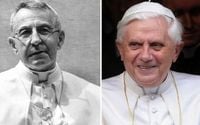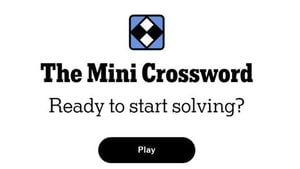The election of the new Pope concluded in just over 24 hours, with four voting rounds taking place from the afternoon of May 7, 2025, to May 8, 2025. This swift process is reminiscent of previous papal elections, particularly those of Albino Luciani, known as Pope John Paul I, who was elected on August 26, 1978, and served for only 33 days, and Joseph Ratzinger, who became Pope Benedict XVI on April 19, 2005, also during the second day of the conclave.
According to historical records, the conclave of 1878, which elected Pope Leo XIII, and the conclave of 1939, which saw the election of Pope Pius XII, both concluded after just three ballots. In contrast, the longest conclave in modern history occurred in 1922, which resulted in Pope Pius XI after five days and 14 voting rounds.
Alberto Melloni, a noted historian, sheds light on the election of Pope Benedict XVI in his book “Il conclave e l’elezione del Papa.” He reveals a strategic move made by Ratzinger during the conclave, where he was elected on the second day after the third voting round. Melloni recounts how, upon realizing that Cardinal Jorge Mario Bergoglio had surpassed one-third of the votes, Ratzinger considered withdrawing from the race.
Melloni writes, “When in the third scrutiny, Cardinal Bergoglio surpasses the threshold of one-third of the votes, Ratzinger considers his run closed and keeps the promise made during the Epiphany designation lunch.” Ratzinger opted to don a simple black turtleneck instead of his formal attire, signaling his withdrawal from the contest.
This pivotal moment was influenced by Cardinal Martini, who, fearing a showdown between Ratzinger and Bergoglio, urged Ratzinger to allow for another voting round. Martini’s intervention effectively shifted votes toward Ratzinger, ensuring his election.
The conclave process is not merely a political maneuver; it reflects the intricate dynamics within the Catholic Church and the varying perspectives among the cardinals. Melloni notes that the decision made in 2005 by the cardinals indicated a desire for stability, viewing Ratzinger as a transitional figure during a time of uncertainty.
As the new Pope is announced, many are left wondering if similar strategic moves were employed in this latest conclave. The speed of the election suggests a clear consensus among the cardinals, but the specifics of the negotiations and discussions remain closely guarded.
In recent history, the election of Pope Francis in 2013 required an additional voting round, culminating in white smoke signaling his election after the fifth ballot. This contrasts sharply with the current conclave's efficiency, which has sparked discussions about the underlying factors influencing the cardinals' decisions.
Throughout history, conclaves have varied in duration and complexity, with some lasting mere hours while others extended over days. The conclave of 1878, which elected Pope Leo XIII, and the conclave of 1939, which resulted in Pope Pius XII, are notable for their brevity, each concluding after only three ballots. In stark contrast, the conclave of 1922 that elected Pope Pius XI is remembered for its protracted deliberations, lasting five days and requiring 14 votes.
As the Catholic Church navigates through contemporary challenges, the choice of the new Pope is seen as a reflection of the church's stance on various global issues. The cardinals' decision-making process is influenced by a myriad of factors, including theological perspectives, regional concerns, and the church's position in the modern world.
The conclave's outcome is not just about electing a leader; it encapsulates the hopes and aspirations of the global Catholic community. The new Pope's election signals a new chapter for the Church, one that will likely address pressing issues such as social justice, climate change, and interfaith dialogue.
As the world awaits the announcement of the new Pope, the implications of this election extend beyond the Vatican walls. It is a moment of anticipation, reflection, and hope for millions of Catholics worldwide.
In summary, the election of the new Pope, completed within a little over 24 hours and four voting rounds, aligns with historical precedents of swift conclaves. The strategies employed by cardinals in past elections reveal the complexities of the decision-making process within the Church, raising questions about the new Pope's approach to contemporary challenges.
The significance of this election cannot be understated, as it marks a pivotal moment in the history of the Catholic Church. The new Pope will undoubtedly face the task of guiding the Church through a rapidly changing world, balancing tradition with the need for reform.
As we reflect on the conclave's proceedings, the anticipation surrounding the new Pope's identity and vision for the Church continues to grow. This election not only shapes the future of the Catholic Church but also resonates with broader societal issues that affect us all.




